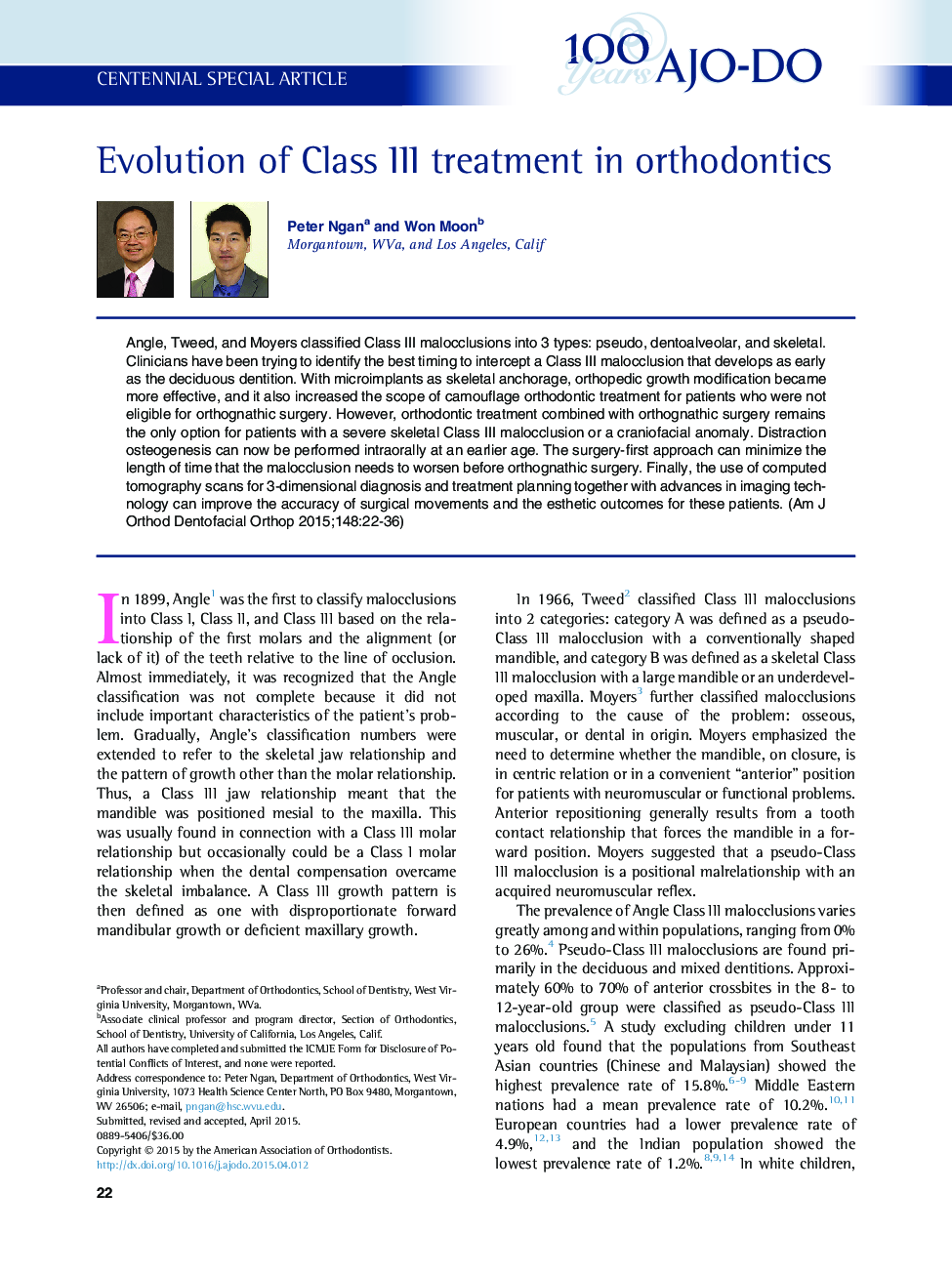| Article ID | Journal | Published Year | Pages | File Type |
|---|---|---|---|---|
| 3115332 | American Journal of Orthodontics and Dentofacial Orthopedics | 2015 | 15 Pages |
•We studied the best timing to intercept a developing Class III malocclusion.•Camouflage is possible with microimplants for skeletal anchorage.•Improvements in technology will help in the diagnosis and treatment of Class III patients.
Angle, Tweed, and Moyers classified Class III malocclusions into 3 types: pseudo, dentoalveolar, and skeletal. Clinicians have been trying to identify the best timing to intercept a Class III malocclusion that develops as early as the deciduous dentition. With microimplants as skeletal anchorage, orthopedic growth modification became more effective, and it also increased the scope of camouflage orthodontic treatment for patients who were not eligible for orthognathic surgery. However, orthodontic treatment combined with orthognathic surgery remains the only option for patients with a severe skeletal Class III malocclusion or a craniofacial anomaly. Distraction osteogenesis can now be performed intraorally at an earlier age. The surgery-first approach can minimize the length of time that the malocclusion needs to worsen before orthognathic surgery. Finally, the use of computed tomography scans for 3-dimensional diagnosis and treatment planning together with advances in imaging technology can improve the accuracy of surgical movements and the esthetic outcomes for these patients.
